Category: News
Tour our Shop
Here is a cute video tour of our shop done thanks to Coupeville Chamber of Commerce.
Changes at Farm and Shop
We’ve made some big changes this year
The farm has transitioned to new owners
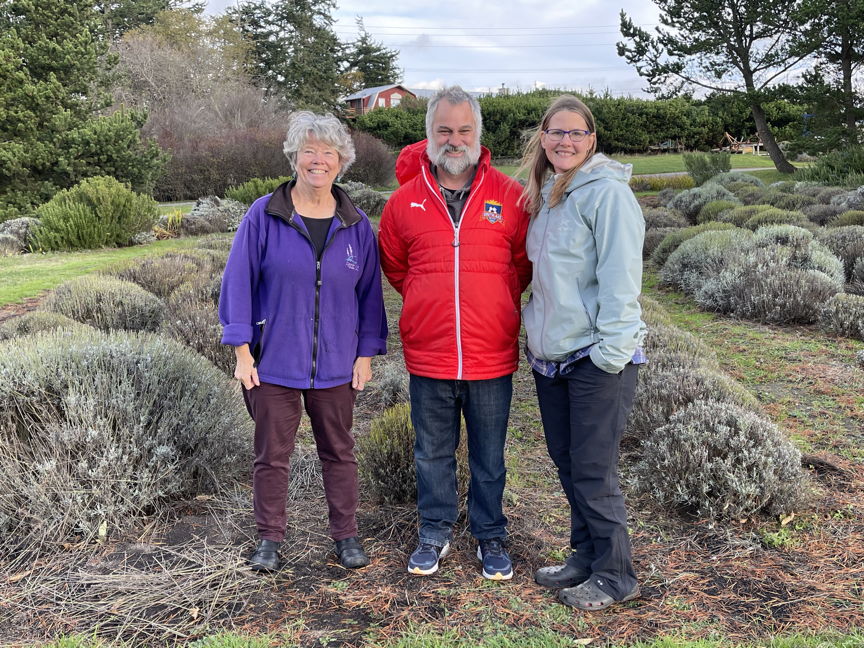
Short Version
In 2000 I planted our first lavender field of about 400 plants. In 2021 I sold the farm part of the business, but not the shop in Coupeville. The new owners have started a website for their farm Western Sun Lavender. I am working with Tyler and Jenny to help them continue growing and harvesting great lavender. Meanwhile, the shop in Coupeville is still mine and it is busy!
Long Version
I’ve been growing lavender for 22 years. It seems like yesterday that I put in the first plants and my farmer neighbor, Jerry Bell, helped me by breaking ground for me when I wanted to get a new section in the field started. Starting as a new farmer is a daunting task, unless, you are someone, like me, who jumps into new things and learns how to swim after the dive in. Now that we have the US Lavender Growers Association you don’t have to do it that way, but I digress. I got lucky – the lavender growers in Sequim organized an international lavender conference in 2000 and I attended. I met some of the greats in lavender and, most importantly, learned that I had better develop the farm in small chunks.
Over the years the farm went from a small plot of lavender to more than 6 acres of 17 varieties of lavender and some catnip and chamomile. That’s not a huge amount in the worldwide lavender growing community where you’ll see fields of lavender that span dozens to hundreds of acres, but it’s pretty big for an individual. We always wanted to share the incredible beauty of that spot that overlooks the Strait of Juan de Fuca and the Olympic Mountains, so having guests on the farm was always the plan. Making things from lavender was also the plan. The agricultural community calls that “value added” products in which you take a basic crop and make it into something more accessible or at least different.
We learned to distill the lavender to get the essential oil and hydrosol. We learned to cook with lavender and developed many food products and taught classes on how to cook with lavender. Lots of people want lotions, creams, and soaps that have lavender scent, so we learned how. Over the years we have had an amazing and wonderful collection of people who worked on the farm in various capacities. We hosted festivals and concerts. I helped to start the US Lavender Growers Association with a group of intrepid lavender growers that gathered in 2011 to organize. That association now has about 700 members (as of the end of 2021). In 2012 I bought a building in Coupeville and remodeled it to include a full commercial kitchen and a retail area. At that point we became a two-location business. Having the farm has given me so many opportunities to grow, learn, meet amazing people, and do my bit to take care of the planet.
But, all things change with time, and I turned 70. Being the sole owner of the farm and the shop in Coupeville wasn’t going to be feasible forever. I had started the process to sell the farm just before the pandemic hit and shelved it when it did. It was good, because the farm gave shelter to friends and family for the next year and a half. But, time marched on and, contrary to ordinary hopes of living forever, I put it on the market. That’s where the story will start to change as the new owners, Tyler and Jenny Saltonstall, pick up the reins and learn to farm lavender. It is their intent to have the farm open to the public in 2022 during the “Purple Season”. Let’s wish them well and support them. Meanwhile, come see me at the shop, we are developing in new ways and are looking forward to sharing new and old products with you.
Visiting the Farm
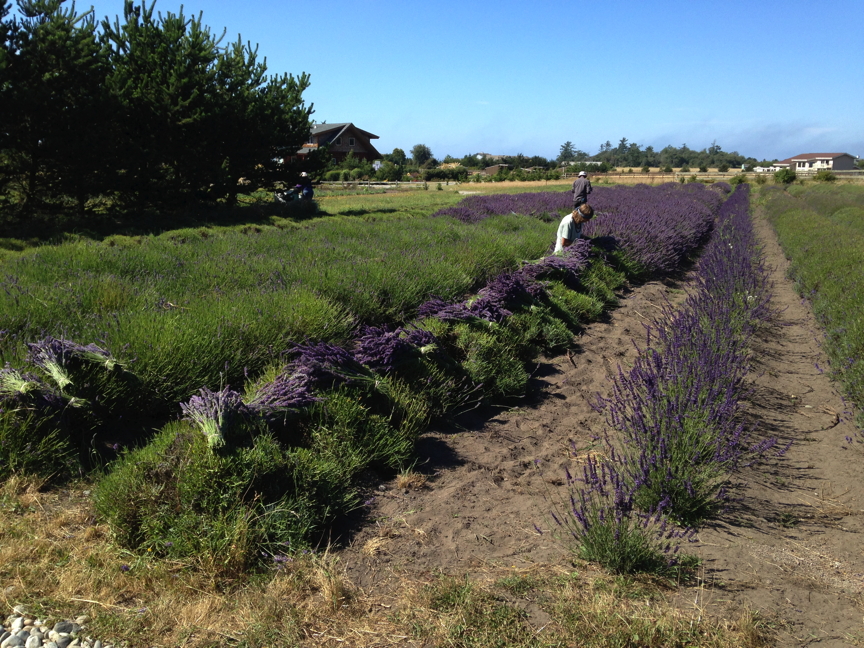
The farm has new owners Thank you for two decades of loving lavender! To find out about the farm from 2022 on please go to Western Sun Lavender.
Growing Lavender and Setting Down Roots
Harry Anderson wrote this article about me in September. He’s a friend, so we had a nice relaxing time talking on afternoon on the farm. That was the upside of this. The downside is that I probably talked too much about my life and he put all that into this article. In spite of my own worries about being too exposed, he’s a consummate professional and did a great job.
Spring Farm Tour Video – April 2020
This is our 3rd video this spring so you can get out without leaving home. Enjoy!
Order Online to Support our farm and the community
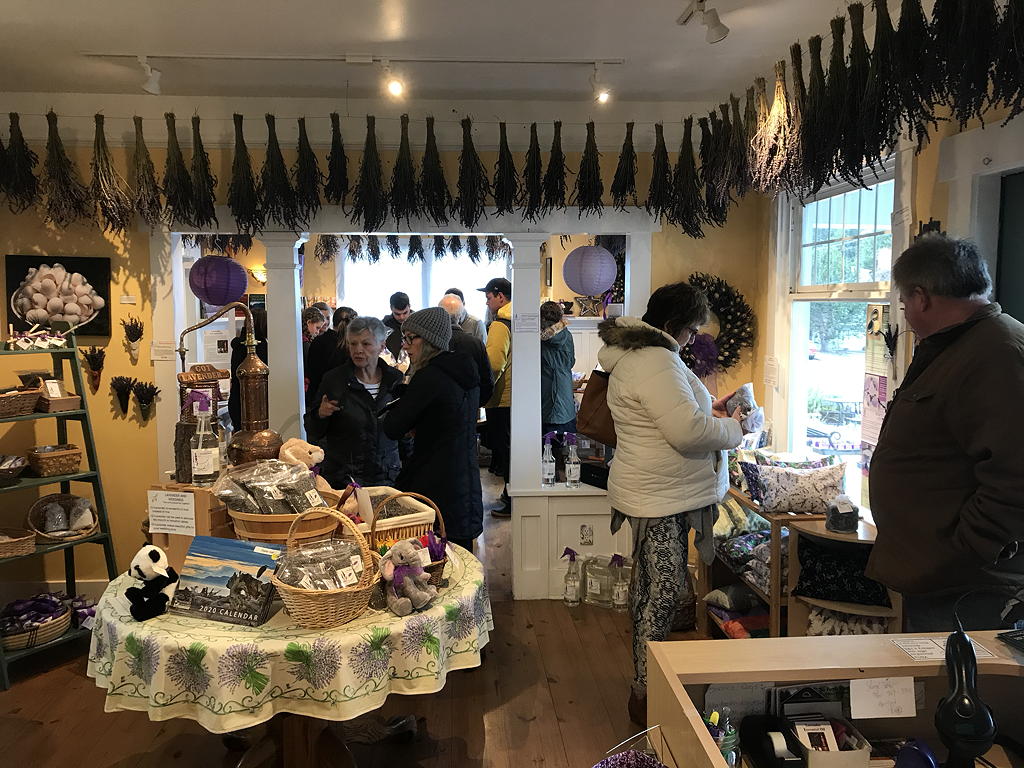
Our retail shop was closed during the first month or so of the pandemic.
This post was updated on Feb. 20, 2021.
Shopping shifted online.
We are following the Coronavirus pandemic closely. The safety of our customers and staff is of the most concern, even if it’s financially painful for us.
We always follow careful cleanliness practices in our entire workspace. Our normal cleaning routines are being augmented with practices recommended by the CDC. This is the very least we can do to promote workplace safety. But, as you know, things are rapidly changing. Our governor has said all gatherings of 50 people (plus or minus) and all restaurants must no longer happen or be open to the public. As you can see, we can’t fit 50 people inside our little shop, but we are so small that folks are necessarily too close to each other at a time when we need to maintain distance. Our customers and staff are very important to us, so we limit the number of people inside the shop. Our staff, will still be making products and filling orders as long as it is safe to do so.
You can still get your lavender products by ordering via our online store and choosing “At Store Pickup”. We will pack up your order and make it available to you when you want to pick it up during normal shop hours (10 to 5).
We will work it out so it’s as convenient as possible for you.
Wholesale Sales not changing, we’ll prepare your orders and ship as normal.
Help us help you
It is important for all of us to stay healthy.
At Lavender Wind we are increasing our sanitation procedures, encouraging employees to stay home if sick or exposed to the virus (we have sick pay options for them), and we want to stay in business.
So, while we are joining with others to keep social contact to a minimum in the midst of the current Covid-19 crisis, we also want to be able to deliver our products to our loyal customers. To that end we want to know how you’d like us to do it.
Please take this survey so we know what you’d like. We will adjust our ideas and offerings based on the responses we get.
[qsm quiz=6]
Move On Over Kitty – Catnip is for Humans Too!
by Georgie Smith
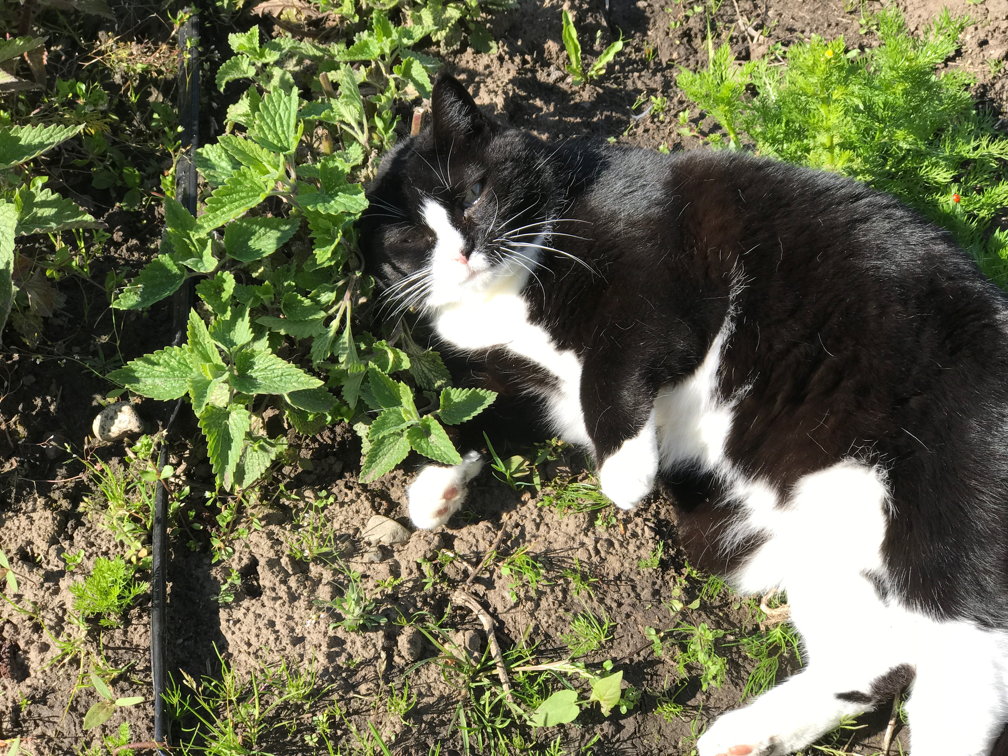
Ever wondered why cats love catnip so much, but humans don’t?
Well, turns out humans do have a lot of ‘non-cat’ uses for catnip, we just don’t know about them! Or perhaps, the problem has been, cats keep stealing the catnip before we ever get a chance to try it out for ourselves?
Whatever the reason, recent studies and anecdotal evidence have generated new interest in catnip, aka ‘Nepeta cataria,’ for human (not cat!) use. Assuming you can get it away from your kitty, of course.
All About Catnip
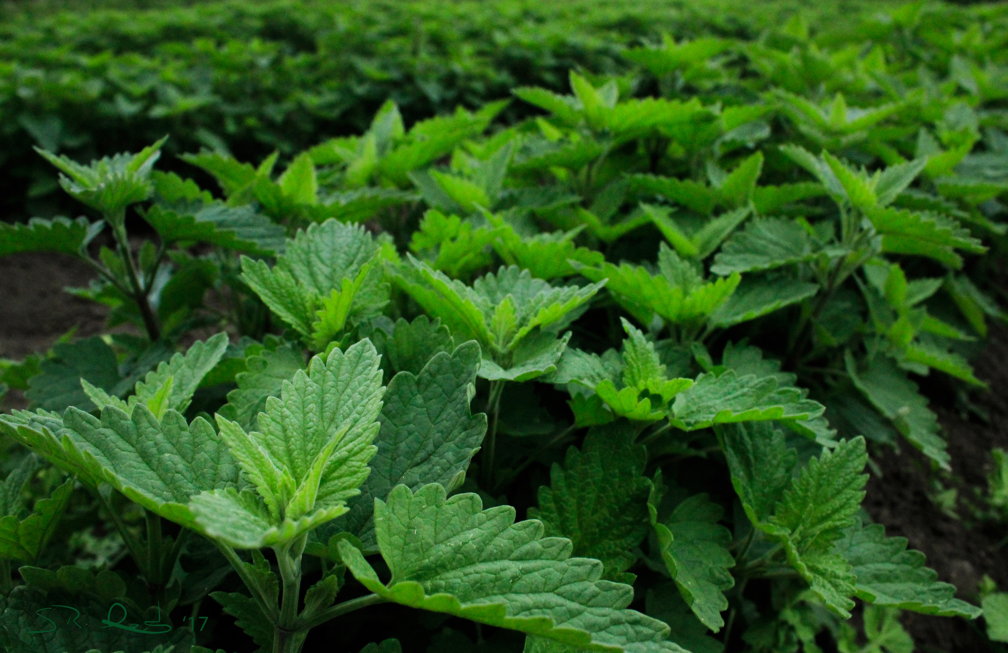
Like lavender, lemon balm, salvia, basil and most of our favorite aromatic and essential-oil producing herbs, catnip is a member of the mint or “Lamiaceae” family of plants. Which means it is a highly aromatic plant that produces lots of organic compounds with various effects and uses.
In the case of catnip, it’s most predominant, naturally-occurring chemical is ‘nepetalactone,’ a terpene with compounds very similar to the same ones found in valerian. A plant well-known for being a mild central nervous system sedative.
Terpenes, if you haven’t heard of them, are an organic hydrocarbon, famous for creating the ‘aroma’ in plants. Recent science and heightened interest in using plants for human health, has uncovered many beneficial uses for terpenes. Mints, lavender, herbs, citrus, pine trees and, perhaps the most famous ‘terpene-producing’ plant of all, cannabis, are all-chock full of various naturally produced, and human-health-supporting, terpenes.
In the case of catnip, ‘nepetalactone’ is well-known for having a noticeable effect on cats. And anecdotally and historically known to help humans with anxiety, insomnia, migraines and many other uses – including flatulence!
Catnip through History, what Came First the ‘Cat’ or the ‘Nip’
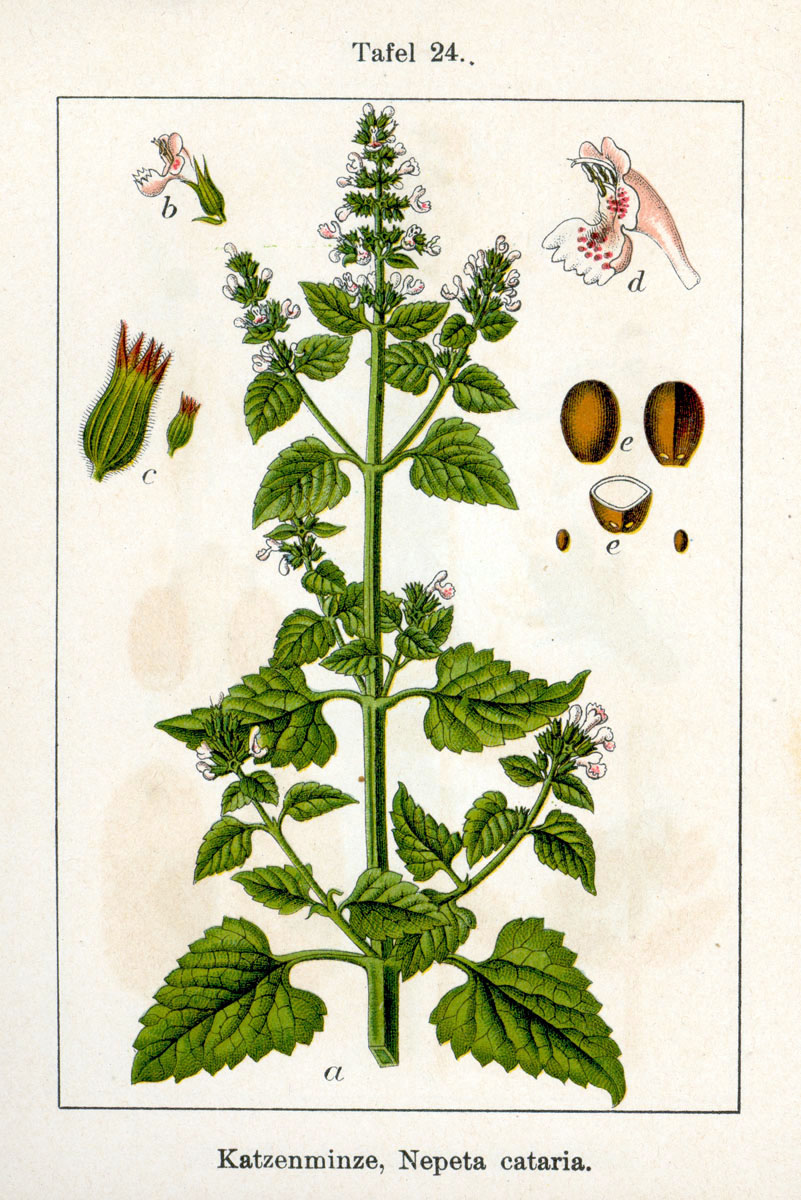
If you’ve ever watched your cat roll around, high as a kite, in a bag of freshly-opened catnip, there is no wonder how the plant received its name.
The plant itself is native to Europe and Asia and is said to have been named after the ancient Etruscan city of “Neptic.” The plant was quite popular as an herbal remedy in ancient and medieval times, used for many skin ailments. While its main claim to fame has been as a relaxation aid, it was said that catnip roots, when chewed, ‘can make a person fierce and quarrelsome.’
Catnip was also used in cooking. It was brought to America in the 1800s from plant cuttings settlers brought with them. Native Americans also began incorporating catnip into their foods and medicinal therapies after being introduced to the plant by early settlers.
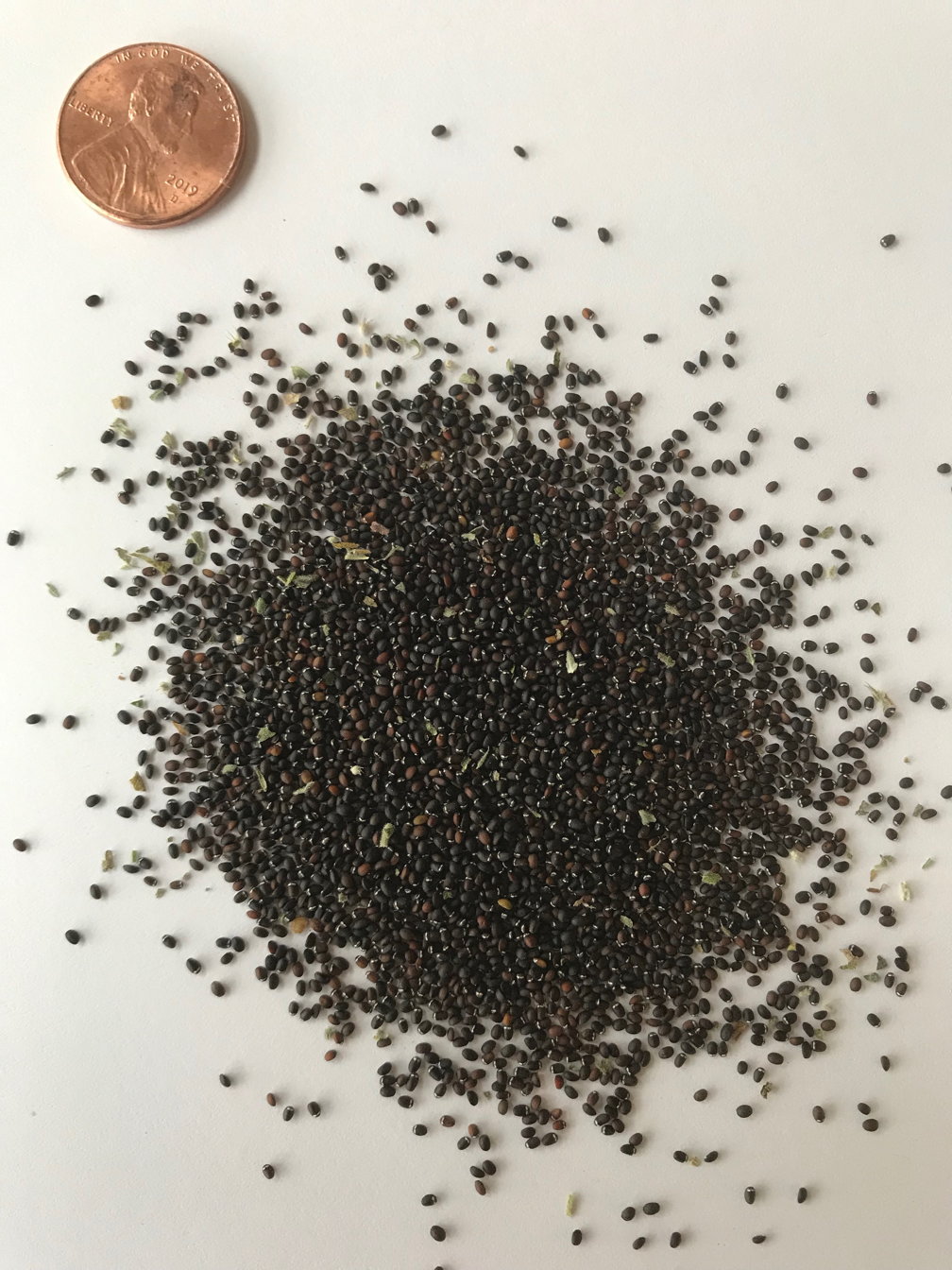
Catnip Today – A Natural Insect Repellent?
One of the more interesting discoveries with catnip is that is a powerful natural repellent of insects. Though actually, this was anecdotally known about catnip for years (including a supposed ability to rebel rodents as well!).
In 2009 however, DuPont took it to the next level, licensing a new, human-safe insect repellent derived from catnip. The “Refined Oil of Nepeta cataria” was, at the time, the first new insect repellent biopesticide to be registered with the EPA in eight years. It is purported to work like DEET, without the harmful and common skin reactions.
But…Can Catnip Get You High?
While historically – and more recently – there have been incidents and anecdotes of humans smoking ‘catnip’ to ‘get high,’ most evidence suggests that while catnip trips out our furry feline companions, it doesn’t have that much juice when it comes to an ‘intoxicating’ element on humans.
Catnip, or more accurately nepetalactone, acts as a natural mimic to a pheromone that cats adore. Or at least, most of them. Interestingly enough, only about 70 percent of cats have the ‘catnip gene’ and so 30 percent don’t react to catnip and scientists aren’t sure why. Humans however don’t react to the same pheromones as cats. Hence, while you might catch your kitty rolling around in that bag of catnip, probably you won’t find your spouse doing the same thing!
Anecdotally, smoking catnip is purported to ‘relax’ humans, again acting as a natural sedative and anti-anxiety relief.
Catnip Tea For the Win
The most common and well-received use for catnip for humans these days is in tea form. Many tea and herbal companies sell teas either with catnip mixed in, or straight as is.

It is also quite easy to make yourself, simply using fresh or dried catnip leaves and steeping in hot water. Of course, make sure to buy fresh – or recently dried, locally and naturally grown catnip (if you don’t grow it yourself!) to avoid any harmful chemicals in your tea. And to make sure the leaves, which do lose their potency fairly rapidly, are as safe and effective as possible.
And while science and the medical establishment has yet to positively confirm these uses, catnip tea is purported to be helpful as a:
- stress reliever
- menstrual aid
- relieving flu and cold symptoms
- decongestant
- digestive aid
- treating diarrhea
Is Catnip Safe for Humans?
While catnip is generally considered safe for humans when used in moderation, caution is always advised when using a natural remedy.
In particular, catnip is considered ‘possibly unsafe’ for children and is ‘likely unsafe’ for pregnant or nursing women. It can cause headaches, vomiting and a feeling of being ill when over-dosed or some people may just have a stronger reaction to it than others.
Always use common sense and do your research before using any natural remedy!
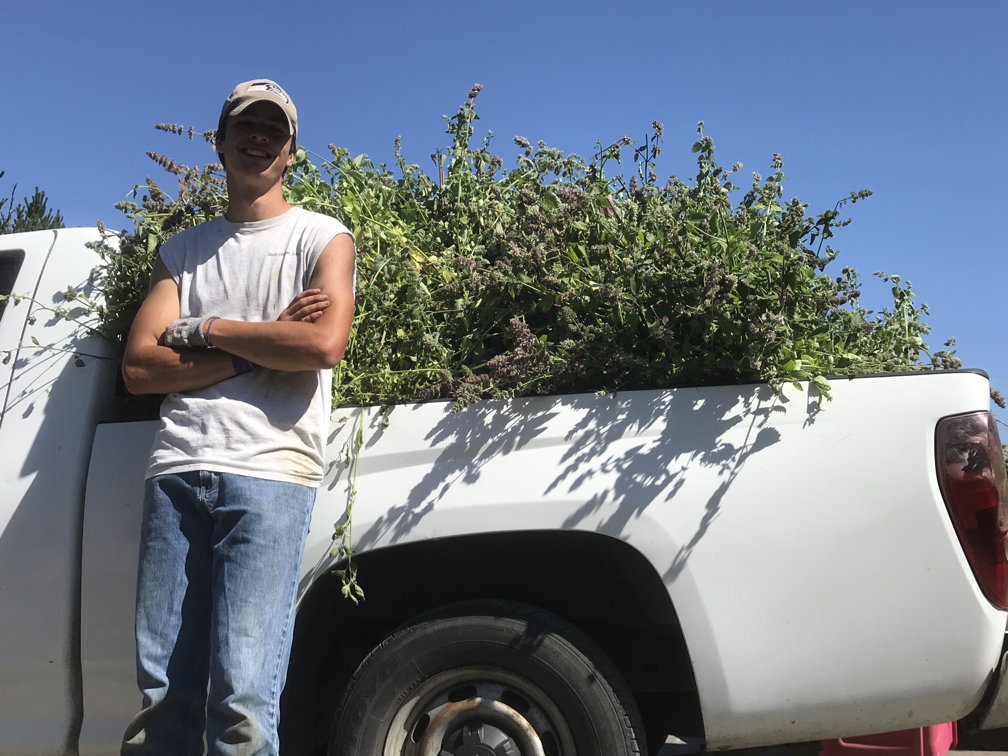
For more information on the fascinating history and uses for catnip, check out these resources:
https://www.leafly.com/news/science-tech/does-catnip-get-cats-high
https://www.healthline.com/health/catnip-tea#uses
https://www.thoughtco.com/nepetalactone-chemistry-of-catnip-608397
https://www.ncbi.nlm.nih.gov/pmc/articles/PMC1480656/pdf/canvetj00079-0049.pdf
https://www.sweetsmokeherbs.com/t-art_can_you_smoke_catnip.aspx
http://catniptoy.co.uk/the-history-of-catnip/
Blooming Season Concerts
This year, the 2019 Concerts are not going to happen. We got mixed up about the permitting, so if we do manage to schedule one, it will be a last minute thing.
We are sorry! Look for them next year. Meanwhile, we have some great tours this year and have lavender scones at the farm shop everyday!
